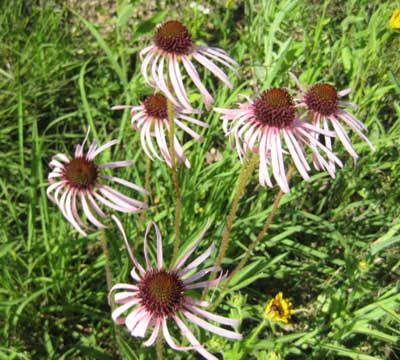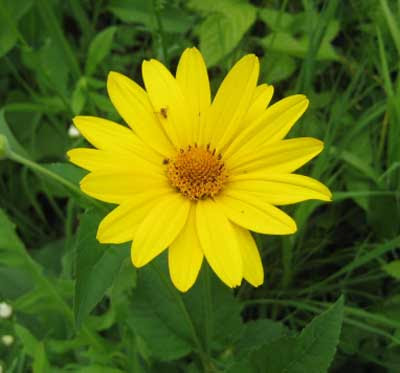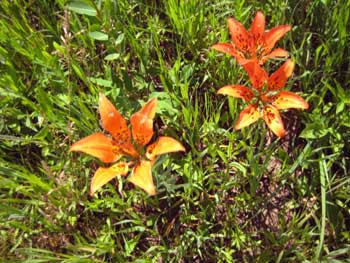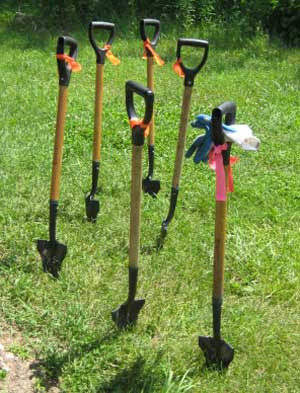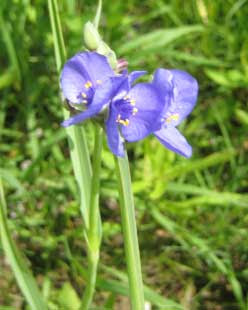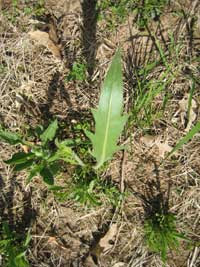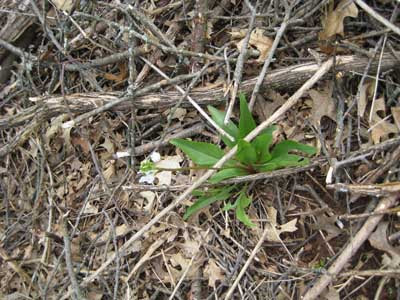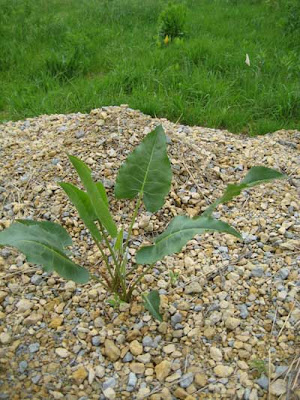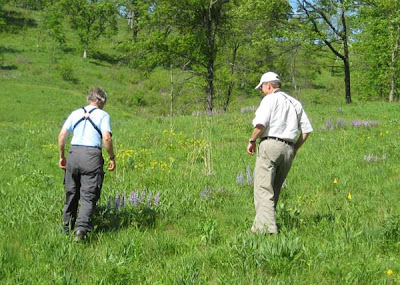In my professional life I was a microbial ecologist and spent over 40 years doing field work in the great outdoors. For ten years I had a major research project in Yellowstone National Park which got me outside in all kinds of weather. This was followed by ten years working on Wisconsin lakes. Through the years I learned to adapt to all kinds of outdoors situations.
When Kathie and I began restoration work in southern Wisconsin, we had to learn of a new set of hazards. Some of these are minor, even trivial, whereas others are more than mere annoyances. Most people learn to deal with these things, and everyone has their own solutions. The ones given here are those that I have found best.
There are two species of poisonous plants that one confronts on an almost daily basis: poison ivy and wild parsnip.
We have a lot of poison ivy at Pleasant Valley Conservancy, and this year seems to be a boom year. This is mostly a hazard in our savanna areas, and it is often found along paths and service roads, but I have seen big patches among tick trefoil in savannas. Since poison ivy and tick trefoil both have tri-partite leaves, they can be mixed up if you aren't paying attention. Often when pulling weeds such as sweet clover, you see a tall outlier just crying to be pulled. You wade into it, grab it at the base of the stem, and pull. Oops! It was right next to a patch of poison ivy. Did I get any on me?
The solution to this problem, as it is for most of the hazards mentioned here, is in one's dress code: work gloves, long sleeves, long pants, and sturdy work shoes. Kathie can't seem to stand long sleeves so she relies on her skill at instantly recognizing poison ivy and carefully avoiding it. My plant ID skills are not as good as hers, so I insist on long sleeves. A cloth hat is also important as a sunscreen and to keep ticks away from the head.
Wild parsnip seems to be a major hazard in our part of Wisconsin. It dominates the road sides and is often seen in huge amounts in old fields. Although we have essentially eradicated this plant from Pleasant Valley Conservancy, there is always a nearby seed source so we must deal with it every year. Wild parsnip produces a chemical that is photodynamic and causes blisters on the skin when exposed to light. A major case of wild parsnip toxicity can be more than an annoyance. I never touch a parsnip plant without being gloved and wearing a long-sleeved shirt.

Work gloves are sold virtually everywhere and are essential for field work. You cannot even venture into a prairie or savanna without wearing work gloves! I'm not talking about gloves for warmth, or for running prescribed burns, but for summer restoration work. Through the years, I have tried all sorts of work gloves, and have settled on gloves that have a cloth back (for coolness) and a waterproof durable front of rubber or nitrile. A long cuff is important to keep plant toxins off the wrist area.
There are lots of brands of these gloves; the photos here are mainly to illustrate the type of glove rather than its maker. The upper photo is of the really lightweight gloves that are best for summer work. The gloves in the lower photo have a better gripping surface and thus are preferable for handpulling sweet clover, wild parsnip, etc.

In the animal world, there are two species that need special attention: chiggers and ticks.
Chiggers are tiny, virtually invisible mites that are able to cause considerable annoyance. The larvae hang out on grass and attach to whatever passes by, including humans. They don't actually bite or burrow into the skin, but they inject a chemical which contains an enzyme which breaks down skin tissue, creating food materials for the larvae. After about 4 days the chigger larva drops off, leaving a red welt that itches terribly. They generally become concentrated in areas of the body where clothing is tight, such as below the belt. We find chiggers mainly in the warmer time of year.
The solution to chiggers is to use a repellent such as DEET (
N,
N-diethyl-
m-toluamide), sold by various trade names such as OFF. Check the label for the active ingredient. Before going into the field in the morning, I spray around my ankles with a generous amount of DEET. (Some people use flowers of sulfur, or tuck there pants under their socks.) Since I have started using DEET, I have had no trouble with chiggers.
Ticks, especially deer ticks, are carriers of a bacterium that causes lyme disease, a major, potentially very serious infection that untreated can even be fatal. Since lyme disease is endemic in our area, we take ticks seriously. Ticks are 8-legged arthropods that are blood feeders. They drop onto the body from trees or vegetation and wander around until they find some bare skin where they can attach. Once they get firmly attached they are difficult to remove. A well embedded tick may require surgical removal. In the early stages of attachment, a special tick tweezers is the best solution. Again, long sleeves and long pants are helpful tick prevention measures, but the most important thing is to examine the body from head to toe after a day in the field. Some people seem to be more tick-attractive than others. I generally find a few ticks each year that have managed to attach to my skin, and perhaps a dozen others found walking upon clothing. DEET works as a repellent.
I realize that in mid summer long sleeves and work gloves are a nuisance, but unless you have a skin like an alligator, they really are essential. Through the years I have been doing restoration work I have found that I have gotten used to these encumbrances. After a few hours I don't even notice them, although I will admit that it is sheer pleasure at the end of a work day to take off the gloves and roll up the sleeves!
